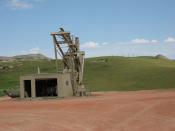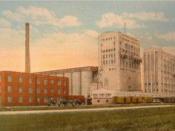Dakota Growers Pasta Company
Dakota Growers Pasta Company (DGPC) is an agricultural cooperative that processes its members?durum wheat into flour and pasta products. The cooperative was incorporated on December 16, 1991 and became fully operational in 1994. By 1998, Dakota Growers was one of the three largest pasta producers in the United States, with facilities located in North Dakota and Minnesota. It has approximately 1,100 members located in North Dakota, Minnesota, and Montana. DGPC was one of the first successful new generation cooperatives in the 1990s. Their success has been an inspiration to others. Many new cooperatives have used DGPC as a model.
Industry Profile
Formative Stages of DGPC
Operations
Company Performance
Lessons Learned
Prairie Pasta Producers
Industry Profile
In 1998, the U.S. Department of Commerce reported that Americans had been increasing their pasta consumption at an annualized rate of between 2 to 3 percent for the past ten years.
In the prior year, North American pasta consumption exceeded 5.0 billion pounds. On a per capita basis, pasta consumption has increased from roughly 7 pounds of pasta in 1984 to 14 pounds in 1994. The increase in consumption is primarily attributable to the fact that pasta is a tasty, relatively inexpensive food that is easy and quick to prepare and can be included in many types of dishes, including salads and main entrees. Products such as boxed pasta dinners and frozen pasta entrees have supported consumers?demands for quick meals to prepare at home. Pasta consumed in restaurants has also grown as a result of the increasing trend for Americans to dine away from home. Pasta is recognized for its nutritional value; along with bread, cereal, and rice, the USDA includes pasta as part of the base of its Food Guide Pyramid. The USDA advises people to eat more of these...


